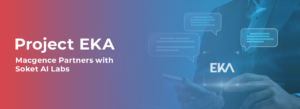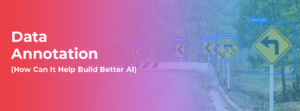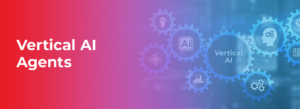- What Is Sensor ML Engineering?
- The Importance of High-Quality Datasets in Sensor ML Engineering
- Where to Find Sensor ML Engineering Datasets
- Best Practices for Preparing Sensor Data
- Real-World Innovations Using Sensor ML Datasets
- What's Next for Sensor ML Engineering?
- Moving Forward With Sensor ML Engineering
- FAQs
The Power of Sensor ML Engineering Datasets
Over the course of the last 10 years, several industries have undergone dramatic changes, on the front lines of which is sensor-based machine learning. The possibilities of engineering sensor ML, starting from training self-driving vehicles, identifying equipment breakdowns, and ending with monitoring the state of patients, are breathtaking.
At the core of every successful ML project are the datasets that power it. But with sensor-based applications—dealing with complex, multidimensional data streams—the quality and reliability of these datasets play an even more pivotal role.
This blog dives into what sensor ML engineering datasets are, why quality datasets matter, where to source them, and how to prepare those datasets for the best results. We’ll also showcase inspiring real-world applications and discuss how the future of sensor-based ML is closer, and more innovative, than you think.
What Is Sensor ML Engineering?
The art of building and developing ML models that operate on data from one or multiple sensors is called sensor ML engineering. Sensors can detect a large array of information such as temperature, movement, sound, pressure, light, bio signals and more. Obtaining measurements of this sort can be processed by ML models which provide useful information and analysis to companies and research scholars.
Applications Across Industries
The applications of sensor ML engineering datasets are vast:
- Healthcare: Wearable sensors monitor heart rate, stress levels, and patient recovery.
- Automotive: Autonomous vehicles rely on LiDAR, radar, and cameras to ensure safety and navigation.
- Smart Cities: IoT sensors measure energy usage, air quality, and traffic patterns for urban planning.
- Manufacturing: Predictive maintenance systems use vibration and sound sensors to prevent equipment failure.
- Agriculture: Soil and weather sensors drive precision farming practices, optimizing resources and yield.
However, none of these advancements would be possible without high-quality datasets to train machine learning models effectively.
The Importance of High-Quality Datasets in Sensor ML Engineering
Machine learning systems are only as good as the data they are trained on. For sensor ML engineering, where data originates from sophisticated instruments, this becomes even more critical.
Why Quality Datasets Matter
- Accuracy and Reliability
High-quality datasets ensure that ML models deliver precise and actionable predictions. Poor-quality data can lead to flawed conclusions, costly errors, or even failures of systems like healthcare devices or autonomous cars.
- Model Performance
Clean and well-annotated sensor datasets lead to faster convergence during model training, saving time and computational power.
- Domain-Specific Challenges
Sensors often generate noisy, imbalanced, or incomplete data. Ensuring quality means addressing these challenges through preprocessing, validation, and augmentation.
Challenges in Acquiring Quality Data
- High Costs: Collecting real-world sensor data often involves expensive sensor hardware or experiments.
- Data Privacy Compliance: Healthcare and certain IoT applications must meet stringent legal privacy standards.
- Complexity of Annotation: Multidimensional sensor data requires expert-level annotation, often combining time-series and spatial data.
Where to Find Sensor ML Engineering Datasets
Building accurate machine learning models begins with accessing the right sensor datasets. Macgence is a leading provider of data for training AI/ML models, offering a robust data marketplace. We specialize in delivering high-quality, curated datasets tailored to diverse industry needs. Whether you’re working on industrial IoT solutions, healthcare predictions, or other advanced applications, Macgence ensures ethical and diverse datasets that can effectively support your goals. Our offerings provide a reliable foundation for achieving precise and impactful machine learning outcomes.
Building Custom Datasets
For ultra-specific applications, consider collecting your own data:
- Deploy your own sensors and gather live-stream data in controlled environments.
- Simulate conditions and generate synthetic data using algorithms.
- Collaborate with data companies like Macgence to efficiently curate custom datasets.
Best Practices for Preparing Sensor Data

After finding or collecting sensor data, proper preparation ensures that you maximize its potential for use in machine learning. Here’s how:
1. Data Cleaning
- Remove noise and outliers using tools like Python’s Pandas or MATLAB scripts.
- Interpolate missing data points to handle gaps in time-series data.
2. Data Preprocessing
- Normalize and scale data to ensure compatibility across different sensor types.
- Conduct feature extraction to distill meaningful insights from raw data streams.
3. Annotation & Labeling
- Use automated annotation tools when available.
- For complex scenarios, rely on industry experts to correctly interpret and label data.
4. Augmentation
- Enrich the dataset by applying techniques like rotation, scaling, or time-series jitter to expand its variety.
Real-World Innovations Using Sensor ML Datasets
Here are examples showing just how impactful quality datasets can be:
- Autonomous Cars
Self-driving companies such as Tesla and Waymo depend heavily on LiDAR and camera sensor datasets to train their AI systems, marking a revolution in transportation.
- Smart Health Monitoring
Startups like AliveCor are using wearable sensor data to detect atrial fibrillation via ECG signals, saving thousands of lives.
- Industrial IoT
Siemens has implemented predictive maintenance for its factories by analyzing vibration data from sensors on heavy machinery, reducing downtime dramatically.
What’s Next for Sensor ML Engineering?
The future of sensor ML is brimming with exciting advancements. Here are three key trends:
- Edge Computing
ML models are being deployed directly on devices, reducing the latency associated with sending sensor data to the cloud.
- Quantum Machine Learning
Soon, sensor ML models might leverage quantum-powered computing to process complex datasets faster than traditional methods.
- Synthetic Data Generation
Improvements in AI will lead to ultra-realistic, simulated sensor data, enabling businesses to prototype faster while reducing costs.
Moving Forward With Sensor ML Engineering
Sensor-based machine learning stands as one of the most fascinating frontiers in technology today. But as powerful as the tech itself is, its true potential hinges on quality sensor ML datasets. Curating these datasets with ethical collection practices, robust data preparation workflows, and domain-specific insights can make all the difference.
At Macgence, we are committed to empowering organizations with reliable datasets that enable breakthroughs in AI and ML. Whether you’re training predictive models for wearables or deploying solutions for smart cities, our rich library of curated datasets and bespoke data curation services can guide you every step of the way.
Explore Sensor Datasets for Your Next AI Model
Looking to elevate your AI/ML workflows? Start today with Macgence‘s sensor-specific datasets. Contact us to discuss custom dataset curation tailored to your unique needs.
FAQs
Ans: – Sensor datasets are often multidimensional, featuring time-series data collected from hardware devices. This makes them more complex and often noisier, requiring careful preprocessing.
Ans: – Techniques like filtering, normalization, and smoothing algorithms can help clean noisy sensor data and enhance its usability.
Ans: – Macgence provides tailored, high-quality sensor datasets with a commitment to ethical collection and precision annotation, ensuring your models perform optimally.
You Might Like
February 28, 2025
Project EKA – Driving the Future of AI in India
Artificial Intelligence (AI) has long been heralded as the driving force behind global technological revolutions. But what happens when AI isn’t tailored to the needs of its diverse users? Project EKA is answering that question in India. This groundbreaking initiative aims to redefine the AI landscape, bridging the gap between India’s cultural, linguistic, and socio-economic […]
March 7, 2025
What is Data Annotation? And How Can It Help Build Better AI?
Introduction In the world of digitalised artificial intelligence (AI) and machine learning (ML), data is the core base of innovation. However, raw data alone is not sufficient to train accurate AI models. That’s why data annotation comes forward to resolve this. It is a fundamental process that helps machines to understand and interpret real-world data. […]
March 6, 2025
Vertical AI Agents: Redefining Business Efficiency and Innovation
The pace of industry activity is being altered by the evolution of AI technology. Its most recent advancement represents yet another level in Vertical AI systems. This is a cross discipline form of AI strategy that aims to improve automation in decision making and task optimization by heuristically solving all encompassing problems within a domain. […]
March 5, 2025
Use of Insurance Data Annotation Services for AI/ML Models
The integration of artificial intelligence (AI) and machine learning (ML) is rapidly transforming the insurance industry. In order to build reliable AI/ML models, however, thorough data annotation is necessary. Insurance data annotation is a key step in enabling automated systems to read complex insurance documents, identify fraud, and optimize claim processing. If you are an […]





